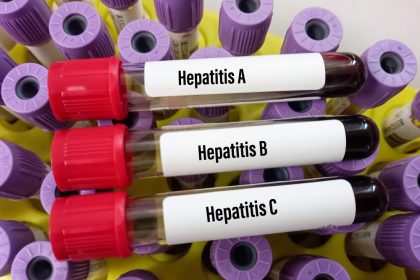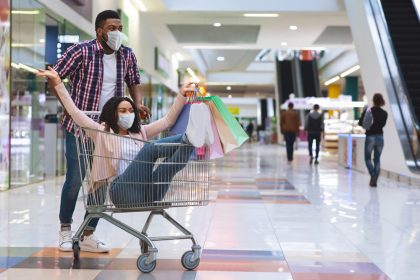COVID-19, the novel coronavirus that spread worldwide, has proven to be highly contagious, affecting millions across the globe. While vaccines and safety measures have been widely implemented, the virus remains a threat. Understanding the reasons why you might contract COVID-19 is crucial in protecting yourself and those around you. This article delves into five significant reasons that could increase your chances of contracting COVID-19, offering insights into how to minimize these risks.
1. Close contact with an infected person
One of the most common ways COVID-19 spreads is through close contact with someone who is infected. The virus primarily spreads through respiratory droplets when an infected person coughs, sneezes, talks or breathes. If you’re in close proximity to someone who is infected — especially without wearing a mask or maintaining social distance — your chances of contracting the virus increase significantly.
Close contact isn’t limited to just standing next to someone; it can also occur in enclosed spaces with poor ventilation. For instance, being in a room with someone who is infected — even if they are asymptomatic — can lead to transmission. The virus can linger in the air, and without proper ventilation, those particles can be inhaled by others in the same space.
To reduce the risk, it’s essential to maintain a safe distance from others, particularly in crowded or enclosed spaces. Wearing a mask — especially in areas with high transmission rates — and ensuring good ventilation can also lower the risk of contracting COVID-19.
2. Exposure to contaminated surfaces
While respiratory droplets are the primary mode of transmission, COVID-19 can also spread through contact with contaminated surfaces. The virus can survive on surfaces like doorknobs, tables and other frequently touched items for hours to days. If you touch a contaminated surface and then touch your face — particularly your eyes, nose or mouth — you can contract the virus.
This mode of transmission underscores the importance of regular hand washing and sanitizing frequently touched surfaces. Many people might overlook the potential risk of surfaces, but in high-traffic areas — like public transportation, grocery stores or office spaces — the risk increases.
To minimize this risk, make it a habit to wash your hands regularly with soap and water for at least 20 seconds. If soap and water aren’t available, use a hand sanitizer with at least 60 percent alcohol. Additionally, disinfecting commonly touched surfaces in your home and workspace can further reduce the chances of surface-based transmission.
3. Attending large gatherings or events
Large gatherings, especially indoors, pose a significant risk for COVID-19 transmission. Events like weddings, parties, concerts or even large family gatherings can become hotspots for the virus, particularly if social distancing and mask-wearing are not enforced.
The risk is higher in settings where people are in close contact for extended periods, and where ventilation may be poor. Singing, shouting or even talking loudly can expel more respiratory droplets into the air, increasing the likelihood of transmission. Additionally, gatherings where food and drinks are served can lead to mask removal, further elevating the risk.
To protect yourself, it’s advisable to avoid large gatherings, especially in areas with high COVID-19 transmission rates. If you do attend such events, consider wearing a mask, maintaining physical distance and ensuring the venue is well-ventilated.
4. Travel to areas with high infection rates
Traveling, particularly to areas with high COVID-19 infection rates, significantly increases your risk of contracting the virus. Airports, bus stations, train stations and other public transport hubs are often crowded and can facilitate the spread of the virus. Even if the destination has lower infection rates, the journey itself can expose you to the virus.
Air travel, for instance, involves spending time in security lines, terminals and on the plane, where maintaining social distance can be challenging. Moreover, exposure to different people from various regions increases the chances of encountering someone who is infected.
If travel is necessary, take precautions such as wearing a mask, practicing good hand hygiene and avoiding crowded areas as much as possible. It’s also wise to stay informed about the COVID-19 situation in your destination and follow any local guidelines or restrictions to protect yourself and others.
5. Complacency with preventive measures
One of the subtler reasons people may contract COVID-19 is due to complacency with preventive measures. Over time, as the pandemic drags on, fatigue can set in, leading people to relax their guard. This could mean skipping mask-wearing, attending gatherings or neglecting hand hygiene.
Complacency can also stem from a false sense of security, particularly in vaccinated individuals. While vaccines are highly effective in reducing severe illness and death, they do not eliminate the risk of contracting or spreading the virus entirely. Breakthrough infections — although generally mild — can still occur and contribute to the spread of COVID-19.
Maintaining vigilance is key to preventing the spread of COVID-19. Even as restrictions ease and vaccination rates increase, it’s important to continue following public health guidelines. Wearing masks in crowded or enclosed spaces, practicing hand hygiene and staying home if you feel unwell are simple yet effective measures to keep the virus at bay.
Applying the lessons from the COVID-19 pandemic
Understanding the reasons why you might contract COVID-19 is a critical step in protecting yourself and those around you. Close contact with infected individuals, exposure to contaminated surfaces, attending large gatherings, traveling to high-risk areas and complacency with preventive measures are all significant factors that increase your risk. By staying informed and adhering to recommended guidelines, you can reduce your chances of contracting the virus and contribute to the ongoing fight against the pandemic.
COVID-19 has proven to be a formidable adversary, but with the right knowledge and precautions, it’s possible to minimize the risk of infection. Stay vigilant, prioritize your health and the health of others and continue to follow the guidance of public health experts to navigate these challenging times safely.
This story was created using AI technology.















